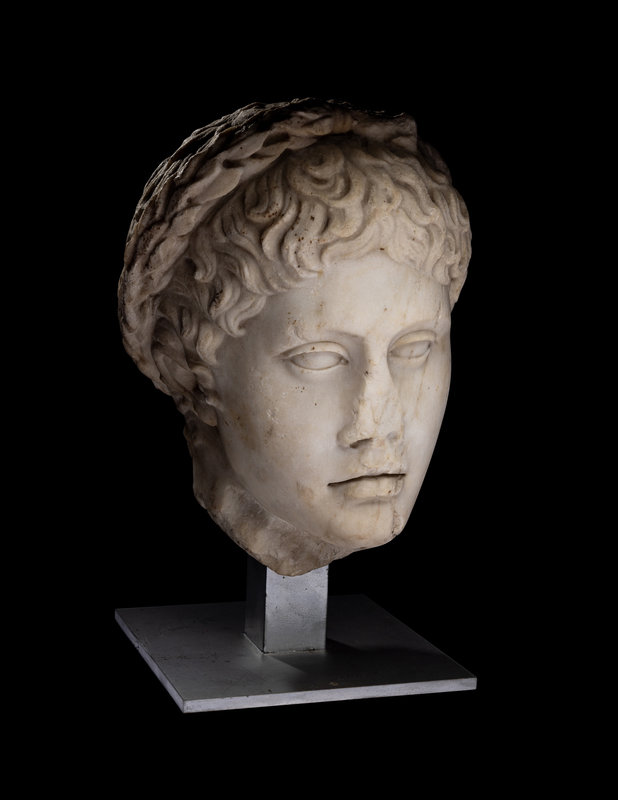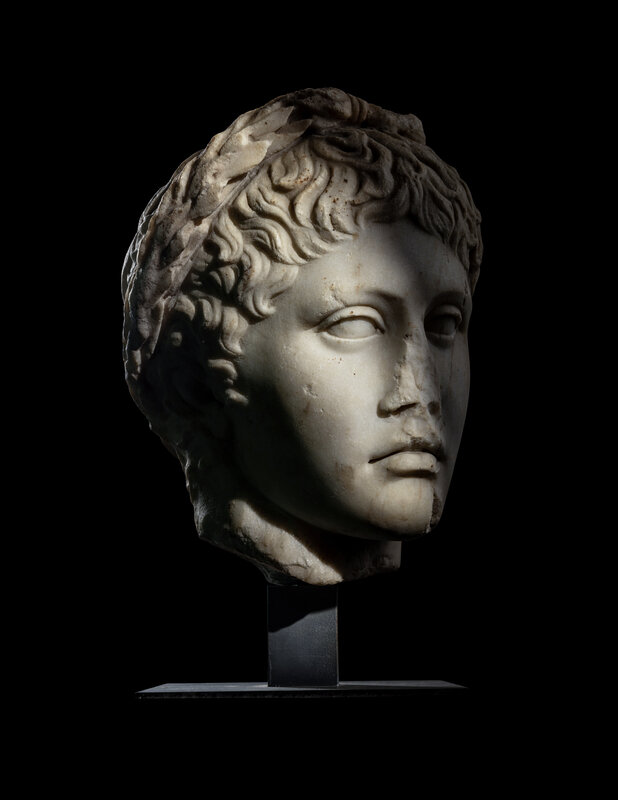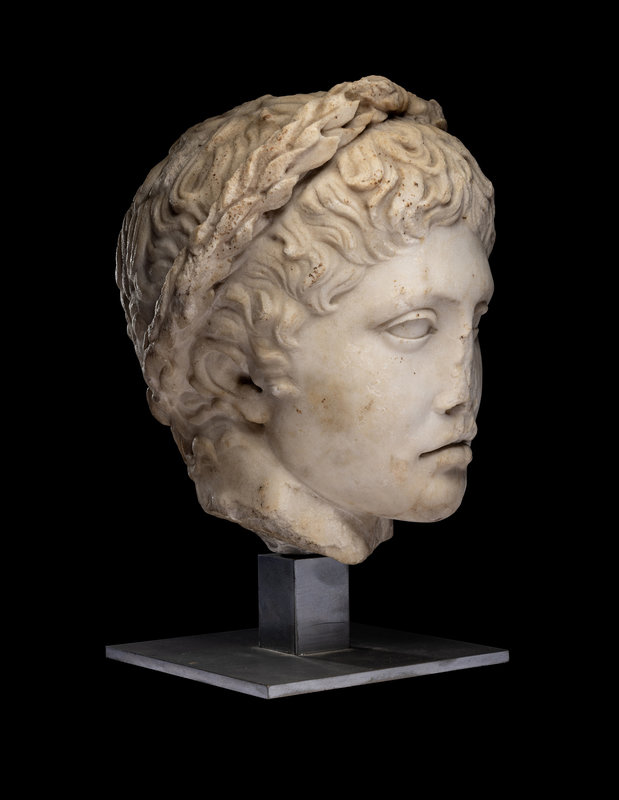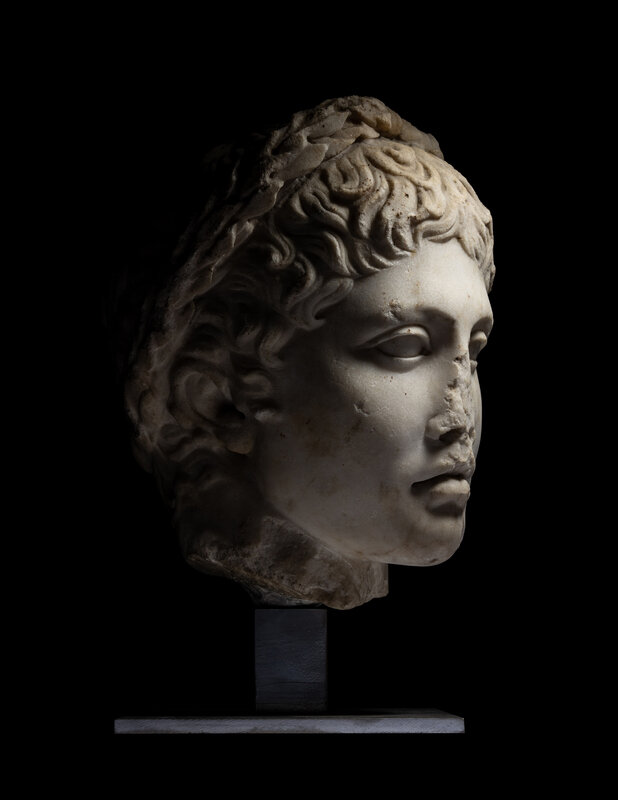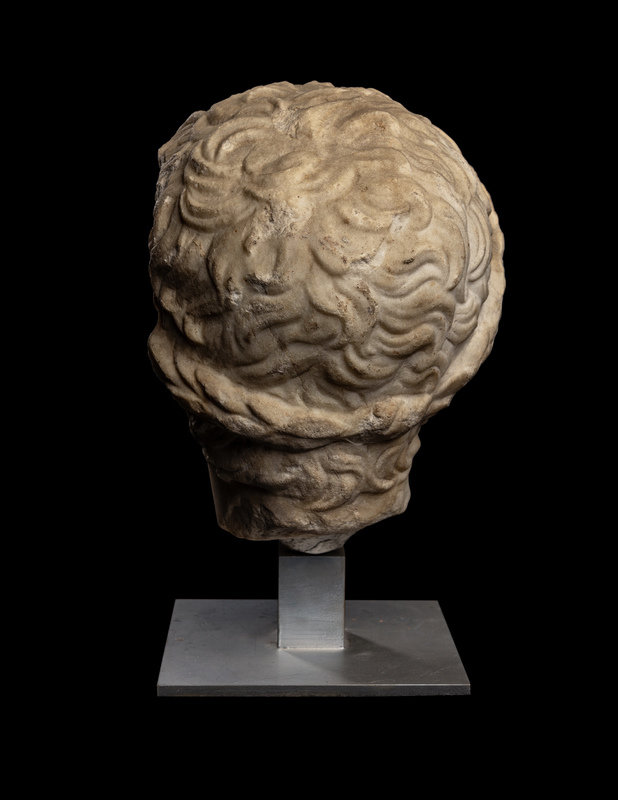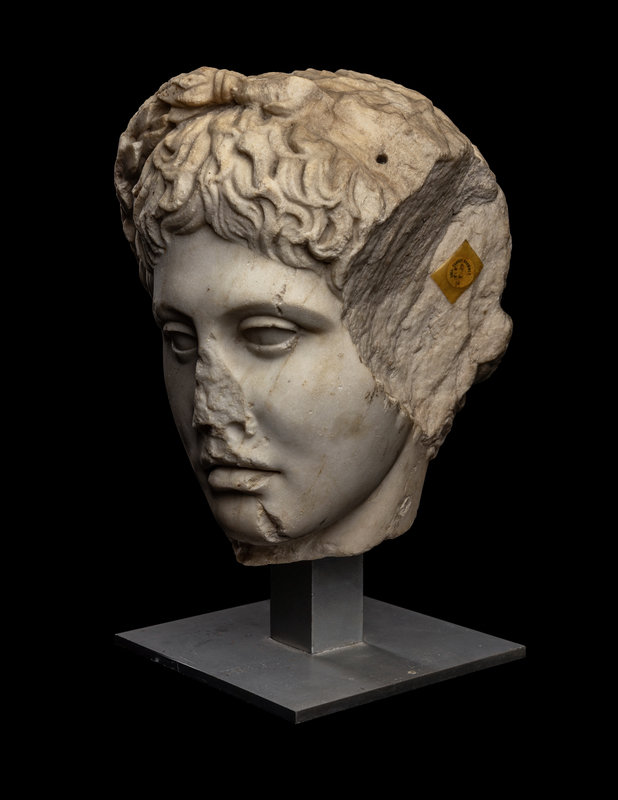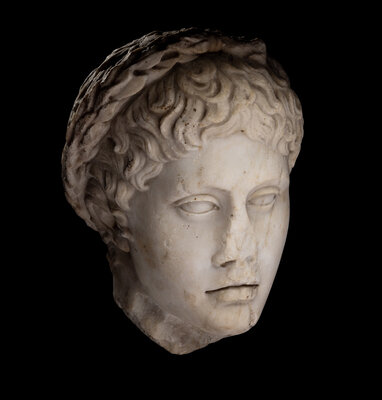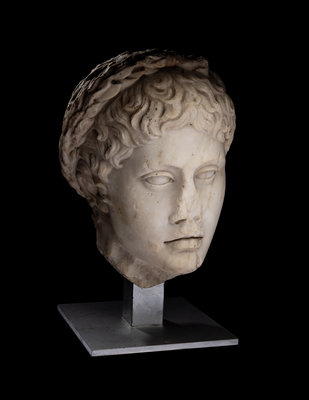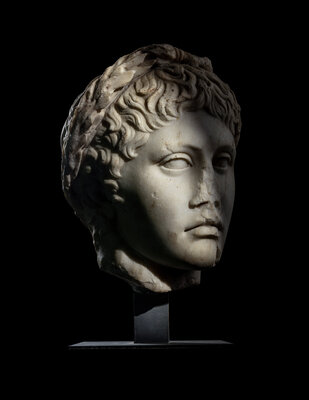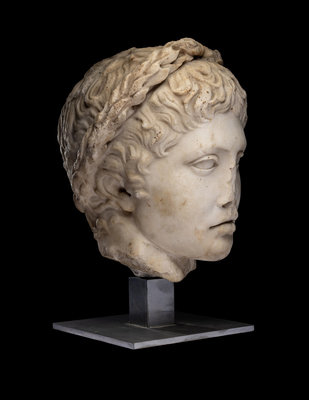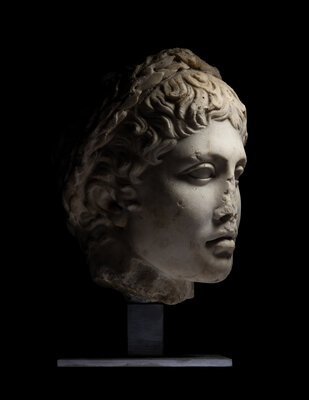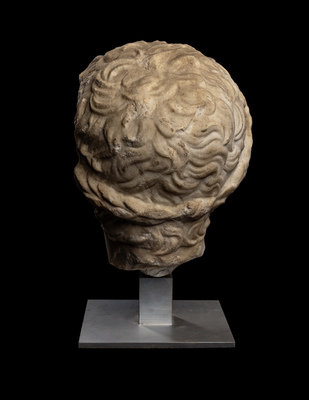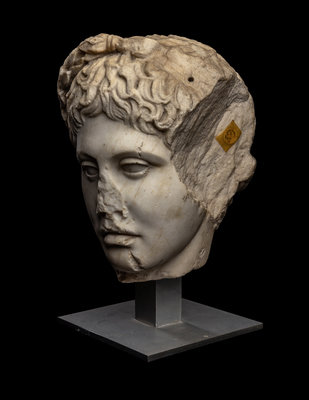Condition Report
Contact Information
Auction Specialist
Lot 18
Lot Description
Provenance:
I.N. Phelps Stokes, New York, prior to 18 November 1926.
Ernest Brummer (1891-1964), Paris & New York, acquired from the above, 29 April 1943.
Ella Bache Brummer, New York, 1964-1999; thence by descent to her nephew, Dr. John Laszlo, Atlanta, Georgia.
Published:
Y. Biro, C. Brennan, and C. Force, The Brummer Galleries, Paris and New York: Defining Taste from Antiquities to Avante Garde. Leiden, 2023, p. 131, fig. 1.30c.
For The Brummer Gallery Records at The Metropolitan Museum Cloisters Library and Archive, see Object Inventory Card Number: N5455 [https://libmma.contentdm.oclc.org/digital/collection/p16028coll9/id/60887/rec/3]
The youth’s head turns very slightly downwards and to the right and is encircled by a laurel wreath. His features are uniformly gorgeous, with full lips in a slight pout, rather deep and closely set almond-shaped eyes, and cropped curls layered richly over the crown and descending over the brow. The idealized features and classicizing proportions preclude an identification with a historical person but rather suggest the inspiration was certainly the famed fifth-century B.C. works of Polykleitos, although the workmanship was some centuries later.
Works such as this–variants of well-known Greek originals–became fashionable with the Roman elite during the Republican period. Pasiteles and his followers during the first century B.C. were especially famed for creatively utilizing these loose "copies" to create new mythological ensembles for garden and villa decoration. This practice continued well into the Imperial period. Among the most famous of these pastiches is the so-called San Ildefonso Group, discovered in metropolitan Rome’s Horti Sallustiani, combining Polykleitan aspects with later sculptural trends, of which the head of the torch-bearing youth has much in common with this present example (Madrid, Museo Del Prado, Acc. no. E000028).

